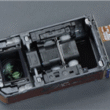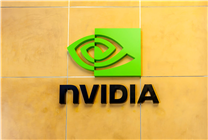Advancements in Electronic Paper Technology: Cooperation Between Star Flash Alliance and E-Paper Industry
On August 27, the Shenzhen International Convention and Exhibition Center hosted the third Electronic Paper Industry Innovation Conference (ePIC 2025). During this pivotal event, the International Star Flash Alliance and the Electronic Paper Industry Alliance entered into a collaboration agreement aimed at enhancing innovation and standards in the electronic paper sector.
Key Innovations in Low-Power Technology
The collaboration spotlighted the innovative Star Flash Low Power Access Technology (SLE), which boasts a remarkable bidirectional interaction delay of just 250 microseconds and a receiving sensitivity of as low as -110 dBm. This technology allows for up to 256 users to connect simultaneously, making it well-suited for large-scale electronic paper deployments, such as multi-screen setups. The advantages of this technology are significant: it optimizes battery life and enhances maintenance efficiency, addressing key challenges in the industry.
High Reliability and Fast Transmission
Additionally, the Star Flash Basic Access Technology (SLB) offers an impressive 20-microsecond one-way delay and guarantees a 99.999% reliability in transmission. This advanced technology can meet the interactive demands of large-format electronic paper displays. The end result is a fluid operating experience that rivals traditional LCDs, further enhancing usability across various applications.
Objectives of the Joint Working Group
The newly established joint working group between the Star Flash and Electronic Paper Alliances has outlined three critical objectives aimed at advancing the e-paper technology landscape:
-
Technical Standards Development: The first goal is to develop cohesive technical standards for star flash communication specifically for electronic paper devices. This includes standardizing interface protocols and testing methodologies to ensure interoperability.
-
Technical Verification Platform: Establishing a technical verification platform is the second objective. This platform will accelerate the integration testing processes for Star Flash modules within the electronic paper terminals, streamlining deployment in real-world scenarios.
- Application Solutions Development: The third priority is the co-creation of solutions for common application scenarios, such as smart shelves, electronic medical record screens, and industrial displays. These innovations will cater to various industries by leveraging the benefits of electronic paper technology.
An Ecosystem of Collaboration
The International Star Flash Alliance is an expansive industrial organization comprising over 1,000 member units, which has effectively built a complete ecosystem ranging from chips and modules to terminal applications. The introduction of a series of star flash modules and development kits by alliance members offers electronic paper companies streamlined access to crucial technologies.
On the other hand, the Electronic Paper Industry Alliance consists of more than 200 member units, encompassing the entire industrial chain—from raw materials to end-user applications. This collaborative atmosphere fosters innovation and ensures that the technology remains at the cutting edge of industry needs.
Conclusion
The partnership formed at ePIC 2025 marks a significant step forward in the realm of electronic paper technology. By setting stringent standards and fostering collaborative solutions, the Star Flash Alliance and the Electronic Paper Industry Alliance are poised to redefine the future of electronic displays. The advancements in low-power access and reliability not only extend the capabilities of current devices but also pave the way for new applications, delivering enhanced functionality across various industries.
This cooperation underscores a commitment to propelling the electronic paper sector into a new era of efficiency and performance, ensuring that these technologies are not just innovative but also practical for everyday use. As the industry progresses, the impact of these advancements will likely be profound, transforming how we interact with digital information.










